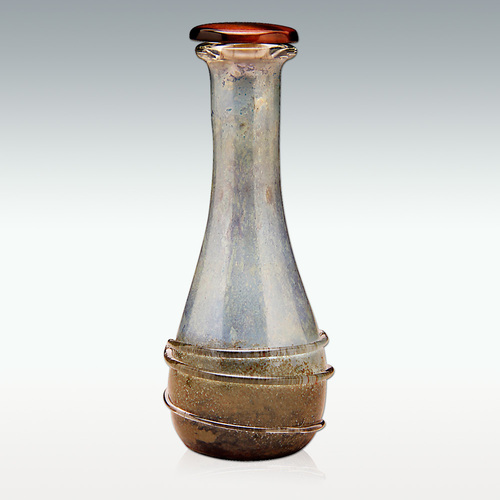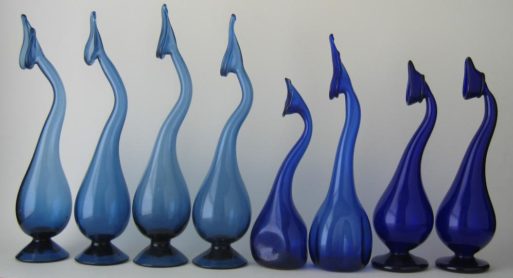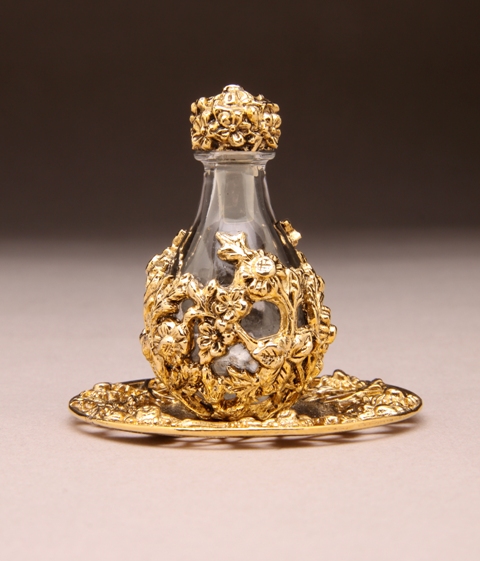
A contemporary tear bottle inspired by ancient Roman lacrimatory
(Credit: perfectmemorials.com)
The tradition of collecting one’s own tears in a lacrimatory, or tear bottle, dates back to ancient times. Tear bottles are made of terracotta or glass, and can measure up to four inches in height. In ancient Rome and Greece, they were supposedly used to catch the tears of mourners at funerals. It is hypothesized that mourners would place their tears in a tomb to show love and respect for the person who had died. Many lachrimatories found in burial tombs from this era contain unguents (an ointment used topically to soothe skin irritations), and it is unclear what their specific usage was in relation to mourning traditions of the time.

A collection of lacrimatories from the ancient world
(Credit:michaelbackmanltd.com)
Lacrimatories have also been found that date back to ancient Persia. Source texts suggest that when a sultan returned from battle, he would examine his wives’ tear bottles to see who missed him the most. During the Victorian era, lacrimatories saw a rise in popularity among the wealthy of the British Empire. These petite masterpieces were more elaborate than their ancient prototypes, often embellished with silver or pewter. Special stoppers were developed to allow the tears to evaporate. Once the tears were dry, the mourning period was considered to have ended for that particular mourner.

A Victorian-inspired contemporary tear bottle
(Credit: thecomfortcompany.net)
Producers of modern lacrimatories remain few and far between, reflecting the contemporary use of tear bottles as a personal choice as opposed to a cultural tradition. These lacrimatories come in all shapes and sizes, purchased as personal keepsakes or gifts of remembrance. Tear bottles are sometimes used to capture a mourner’s tears, and in other instances are used as miniature urns when distributing cremains among several individuals.

 The Revitalization of Tear Bottles
The Revitalization of Tear Bottles


 How Dare You Die Now!
How Dare You Die Now!
 Debating Medical Aid in Dying
Debating Medical Aid in Dying
 “Help Me, Helen”
“Help Me, Helen”














